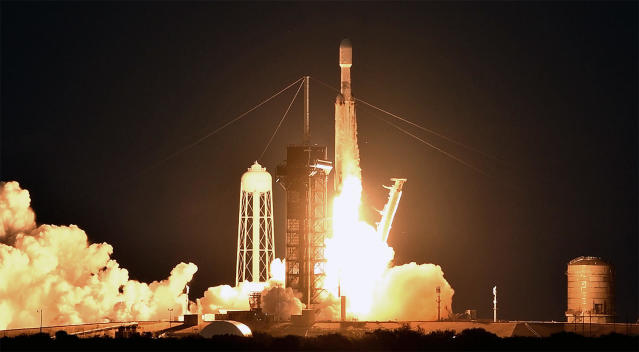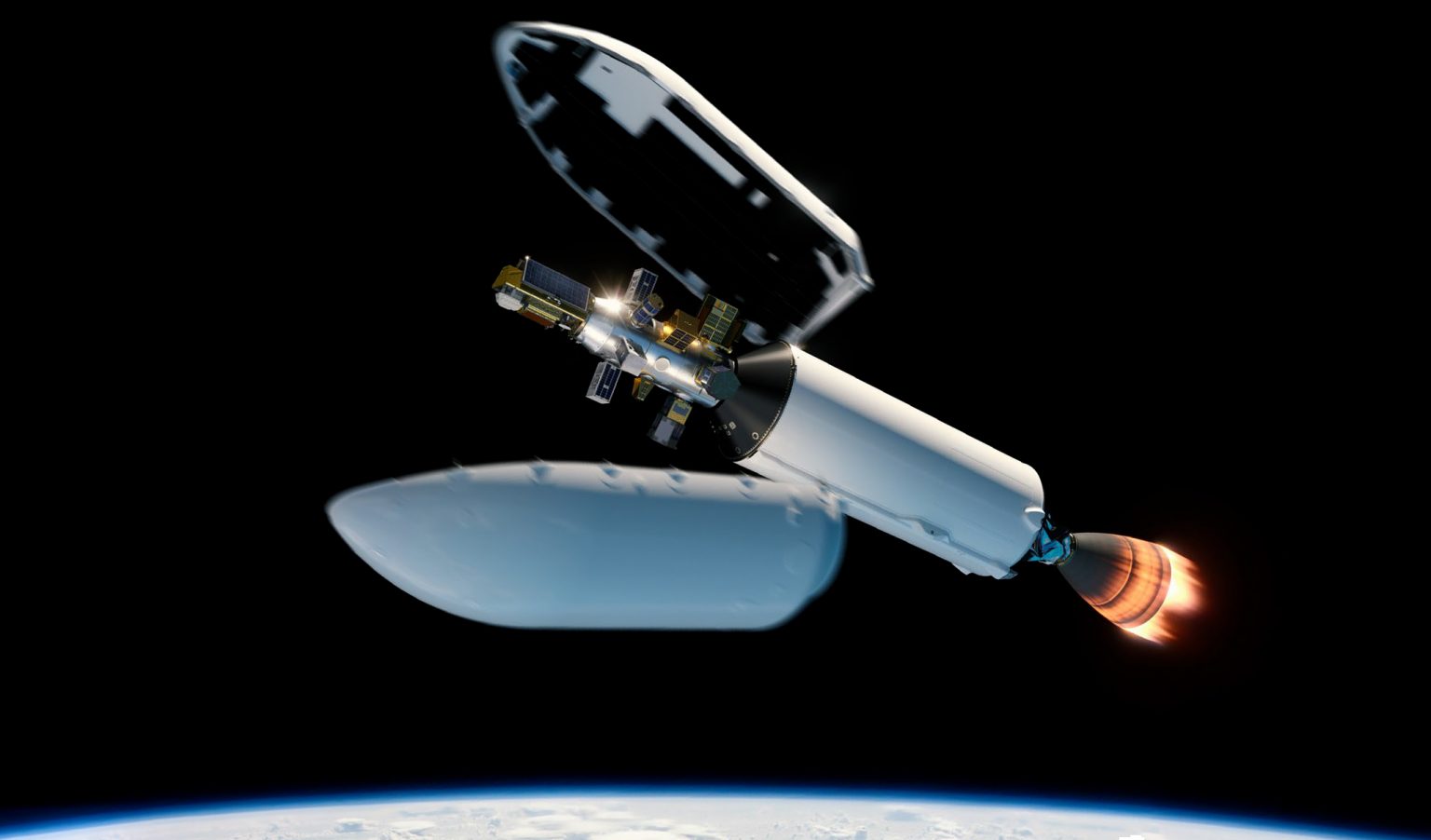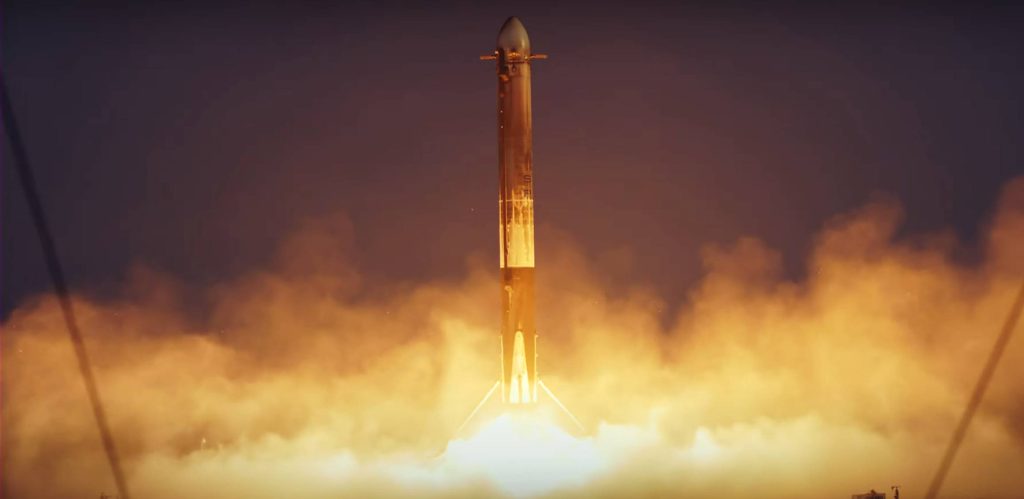SpaceX Falcon Heavy rocket launches its fifth flight in the most spectacular way yet.
Falcon Heavy was powered by three Falcon 9-derived boosters, each with nine Merlin 1D engines, and flew off of the Kennedy Space Center LC-39A pad at the start of its Sunday launch window. The side boosters were powered by compressed nitrogen gas and lit up when they flipped around. Because Falcon Heavy lifted off after sunset, local skies were dark and the rocket quickly climbed back into daylight. The USSF has not confirmed much about the USSF-67 mission, but it is known that Falcon Heavy is carrying a satellite built by Boeing. To ensure the Falcon upper stage is traveling fast enough and has enough propellant to spare, one of the three boosters must be sacrificed. At least three or four burns must be conducted by the upper stage.

The US Space Force's USSF-67 mission produced one of the biggest commercial rocket launches yet, when the fifth Falcon Heavy lifted off shortly after sunset. Falcon Heavy was powered by three Falcon 9-derived boosters, each with nine Merlin 1D engines, and flew off of the Kennedy Space Center LC-39A pad at the start of its Sunday launch window.
Advertisement
Falcon Heavy Ascends pic.twitter.com/tXZBbuoyRr
— Elon Musk (@elonmusk) January 16, 2023
Advertisement
Producing up to 2326 tons. The second most powerful operational rocket and the world's most powerful commercial rocket, Falcon Heavy, had 13 million lbs of thrust after liftoff. The same side boosters were used in both USSF-67 and USSF-44.
B1064 and B1065 separated from the expendable center booster around three minutes after liftoff, after flying for the second time in 75 days. The side boosters were powered by compressed nitrogen gas and lit up when they flipped around. After returning to Florida, they fired up one last time to gently touch down at the LZ-1 and LZ-2 landing pads.
ANOTHER MYSTERIOUS MILITARY MISSION
Because Falcon Heavy lifted off after sunset, local skies were dark and the rocket quickly climbed back into daylight, creating spectacular contrast between twilight and the bright rocket exhaust
When Falcon Heavy's side boosters flipped around and reignited, their high-velocity exhaust plumes slammed into the center core's opposing plume, producing spectacular interactions and a nebula-like cloud that caught even more of the daylight.
Advertisement
What an incredible view of the #SpaceX Falcon Heavy launch from my drone over Murrells Inlet! You can even see the booster separation! #scwx #ncwx pic.twitter.com/K6are8oNEz
— Ed Piotrowski (@EdPiotrowski) January 15, 2023
Advertisement
Had the rocket lifted off just a few minutes later, the sky would have been even darker and the rocket would have been even more spectacular. The live coverage was ended at the request of the Space Force due to the mission's secretive customer and nature. The USSF has not confirmed much about the USSF-67 mission, but it is known that Falcon Heavy is carrying a satellite built by Boeing.
Advertisement

Advertisement
The third Long Duration Propulsive EELV is a combination of a propulsive kick stage and a satellite. LDPE-3A is carrying a collection of satellites and is designed to operate for a long time. Using USSF-44 as a guide, the total USSF-67 payload could weigh roughly 3.75 to 4.75 tons (8,250-10,500 lb).
CLIMBING TO GSO
While small compared to ordinary payloads, Falcon Heavy is launching USSF-67 directly to a geosynchronous orbit
Direct-to-GEO/GSO launches are very challenging. To ensure the Falcon upper stage is traveling fast enough and has enough propellant to spare, one of the three boosters must be sacrificed. At least three or four burns must be conducted by the upper stage.
Advertisement

Advertisement
The first burn is believed to have carried the upper stage and USSF-67 to a parking orbit around 300 kilometers above Earth. A second burn of the upper stage's Merlin Vacuum engine will lift the pair into a GTO with the low end still around 300 kilometers but the high end around 35,800 kilometers. The upper stage has to survive a five-hour coast to that apogee.
Advertisement

Advertisement
During that coast, the rocket must survive passes through both of Earth's harsh radiation belts and maintain perfect control of its orientation and tank pressures to keep its refined kerosene fuel from freezing, its cryogenic liquid oxygen (LOx) from boiling away, and itself from bursting as its propellant warms
Advertisement